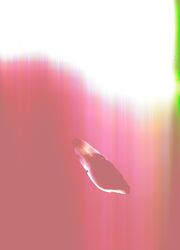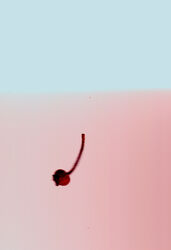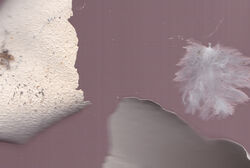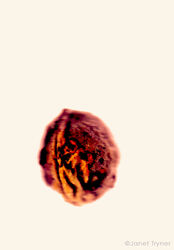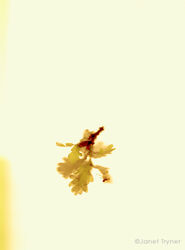Cracks in the moon and aliens in the sand
artist book: (PDF).
Cracks in the moon and aliens in the sand explores small lives, and the materiality of digital seeing through scanning.
It began during lockdown when I scanned finds of leaves and tree seeds from my hourly walk. Because they were bulky I had to lever the scanner lid off and noticed the ambient light was altering each scan. No two were exactly the same. Increasing the dpi of the scan increased the jittery fall-off of focus at the edge of objects. Producing this sense of the scanner struggling to focus. It didn't know what to put. And its struggle made its algorithm visible. That played into the contrast between my pandemic-induced nervousness and the calm inevitability of time passing marked by falling leaves.
Scanning in different places at different times of day evolved into a remote scanning kit that will fit into a backpack. I also have a small collection of old desktop scanners. Each processes light and handles what it can't focus on differently.
In 2021, I had the opportunity to work with Coventry Biennial of Contemporary Art, as they renovated rooms at the top of Coventry's new music venue The Empire, which became the Hyper Lab during 2021/22 Hyper Possible. Scanning amongst the huge amount of dust and rubble mixed in with pigeon feathers and works paraphernalia. The few images I captured there prompted some COVID19-inspired writing which eventually became a photo-essay 'Cracks in the moon and aliens in the sand'. I was delighted that Coventry Biennial decided to publish this as an artist book.
Cracks in the moon and aliens in the sand explores small lives, and the materiality of digital seeing through scanning.
It began during lockdown when I scanned finds of leaves and tree seeds from my hourly walk. Because they were bulky I had to lever the scanner lid off and noticed the ambient light was altering each scan. No two were exactly the same. Increasing the dpi of the scan increased the jittery fall-off of focus at the edge of objects. Producing this sense of the scanner struggling to focus. It didn't know what to put. And its struggle made its algorithm visible. That played into the contrast between my pandemic-induced nervousness and the calm inevitability of time passing marked by falling leaves.
Scanning in different places at different times of day evolved into a remote scanning kit that will fit into a backpack. I also have a small collection of old desktop scanners. Each processes light and handles what it can't focus on differently.
In 2021, I had the opportunity to work with Coventry Biennial of Contemporary Art, as they renovated rooms at the top of Coventry's new music venue The Empire, which became the Hyper Lab during 2021/22 Hyper Possible. Scanning amongst the huge amount of dust and rubble mixed in with pigeon feathers and works paraphernalia. The few images I captured there prompted some COVID19-inspired writing which eventually became a photo-essay 'Cracks in the moon and aliens in the sand'. I was delighted that Coventry Biennial decided to publish this as an artist book.
